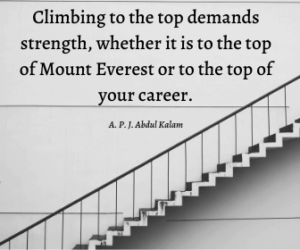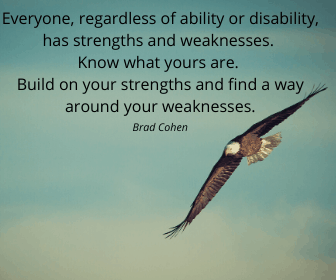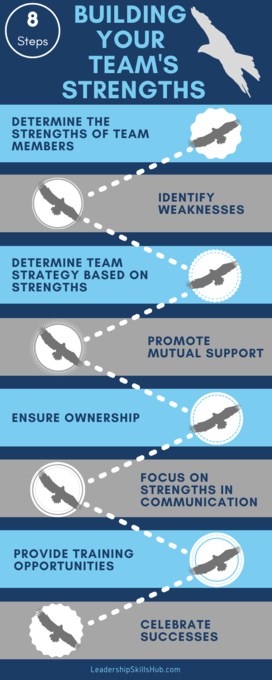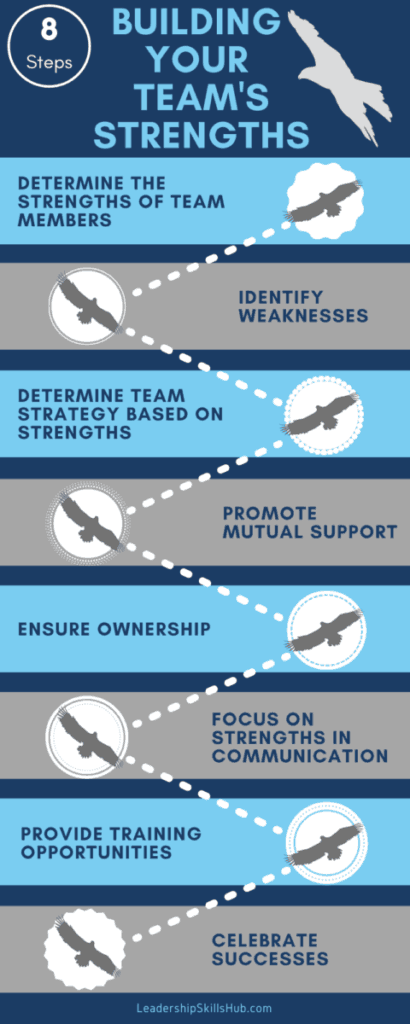The idea of a leader developing their employees’ strengths is simple: figure out what your associates do well, and have them do more of it. Conversely, figure out individual weaknesses, and have them focus less in these areas. Exploit the strengths. Manage the weaknesses.
The idea is simple, but implementation can seem a little more challenging.
So, how does a leader build their team’s strengths?

- Determine the strengths
- Identify the weaknesses
- Determine team strategy based on strengths
- Promote mutual support
- Ensure ownership
- Focus on strengths in communication
- Provide training opportunities
- Celebrate successes
For many years, it’s come very naturally for managers in business to observe, identify problems, and then work towards fixing them. Identify, fix, repeat. Some might even say that it’s a “glass half empty” method of leadership because the effort is on what’s wrong, not what’s working well.
Does this mean it’s better to ignoring problems? The answer is no. According to the authors of Soar with Your Strengths (Clifton, D.O. and Nelson, P., 1992), “The Strengths Theory stresses that focus must be on the strengths while weaknesses are to be managed, not ignored.”
To demonstrate further that focusing on strengths is the way to build better teams, the authors ask the reader to identify situations when they were the most confident — in times when their strengths were in play, or when they were focusing on their inadequacies? What comes to mind for most people is the successes that were reached through their own strengths. (1)

According to Gallup, a company’s overall decision-making process improves when associates understand what their natural strengths—and those of their associates—truly are.
Focus on Strengths
What happens when companies value employees’ strengths? Employees are more apt to feel valued and, in turn, are more likely to have more engagement in the department’s and company’s objectives and put forth more effort.
Steps to developing individual strengths
(1) Determine Strengths
Determine what each individual’s strengths actually are.
The first way to support employees exploiting their strengths is to determine what they actually are. Come at it from a brand new perspective, putting assumptions aside. And don’t assume that the employees know their own strengths. Many don’t.

Have employees list them. Have them ask their peers. (This can help a lot. Have you ever been asked something about yourself that others see easily, but you have a hard time seeing in you? Often others see things in people that they just can’t see themselves.)
Team members need to take an active role in this step, as well as step 2. Ownership is key, since no one can really work with abilities or inabilities that they don’t acknowledge they have.
(2) Identify weaknesses
Determine each team member’s weaknesses. This will enable you to put strategies into place to purposefully spend less time on these tasks. (We’ll talk about this more in the section about managing weaknesses, below.)
Some examples? Reports, presentations, proper writing, etc.
“Focus on your strengths, not your weaknesses.Focus on your character, not your reputation.Focus on your blessings, not your misfortunes.”
Roy T. Bennett
(3) Determine team strategy based on strengths
Assign tasks that will accomplish team goals based on the strengths recognized by each team member. Get buy-in from team members. Focus on enabling each team member to shine by having them hone in on what they do well.
(4) Promote mutual support
Encourage all team members to recognize all others’ strengths. They should be their own teammates’ cheerleaders. Support cross-training where it makes sense. The team will only grow stronger as a unit.
(5) Ensure ownership
Make sure that duties/tasks outlined are understood by each team member and agreed to by you and them. These expectations need to be owned by the individuals, and supported by the office environment. Ownership is key to full employee engagement and commitment to achieving the goals.
(6) Focus on strengths in communication
Communication from the leader should be centered around the strengths of each team member. Does that mean not to mention faults? Well, no. If you’re going down the wrong path in trying to get where you want to go, unless you recalibrate, you’ll end up in the wrong place. But positive communication about the person’s strengths can and should be more prevalent in conversation if that’s the behavior that you want more of.
This means for all formats of communication: informal discussions, emails, during meetings, and also in performance reviews.
(7) Provide training opportunities
Achievers are goal-oriented. But achievement is almost always a moving target. Once one goal is met, another is set. Facilitating the chances for individuals on your team to get training on skills they’re excited about keeps them committed to continued development of their strengths. It provides them opportunities for growth. And growth feels good.
(8) Celebrate successes
Celebrate achievements! People are relational creatures. We relish when others appreciate us—our words, gestures, accomplishments. It makes us feel valued for others to positively recognize us. The cost of celebrating the value each team member brings to the group is far outweighed by the benefits.
Those are the steps for helping the team develop strengths, but we talked a lot about weaknesses. Let’s discuss weaknesses a little more…
How Do You Help Your Team Manage Weaknesses:
- Have employees list tasks drain their energy and don’t provide some sort of satisfaction.
Have them make a list of the things that they did begrudgingly, things that took up time, but didn’t provide them any real personal or professional benefit. Make changes, if possible, to help them eliminate those “energy suckers.” Where they can’t be eliminated, maybe then can be minimized, or transferred to someone who believes those tasks fall within their strengths.
Listing weaknesses does something else, too. Acknowledging weaknesses and truly understanding what they are gives the employees the ability to consciously give less focus to them and more focus to their strengths.
- Pair employees with others on tasks who can both add different strengths to the tasks, to enable them to explore creative solutions to reach success together, using each other’s strengths as building blocks with their own.
- Have employees utilize their resources. Since weaknesses are going to vary from one team member to the next, the resources that they might utilize to make their life easier – to help manage their weaknesses – are also going to vary.
For the individual who just has trouble getting their thoughts onto the keyboard, (they’re typing-challenged), maybe a resource that can help is a voice-to-text assistant. For the person who has trouble organizing, they may want to take advantage of digital organizational tools, such as work flow assistants. Regardless of the weakness, help your employees by enabling them to find and use resources that will lessen the challenges of those weaknesses.
Encourage delegation. Are there support personnel who might easily take on tasks that are weaknesses of other team members? Encouraging all team members to understand the need for collaboration and assisting where and when there’s a call for it can be a huge help in enabling team members to reduce the power of their obstacles and really shine with their strengths.

Summary:
Providing opportunities to shine by demonstrating strengths isn’t a new concept, but to some the paradigm is foreign because they’ve not been introduced to it in their own careers. Many have been programmed to focus on errors, faults, or problems… find and fix. This doesn’t spotlight the strengths of associates and encourage those strengths to flourish.
But, there’s good news! As was said a couple of times above, acknowledging is the first step to making productive changes.
“Good leaders make people’s strengths effective and their weaknesses irrelevant.”
~ Frances Hesselbein
- Clifton, D.O., and Nelson, P. Soar with Your Strengths, New York, NY, Delacorte Press, 1992.


